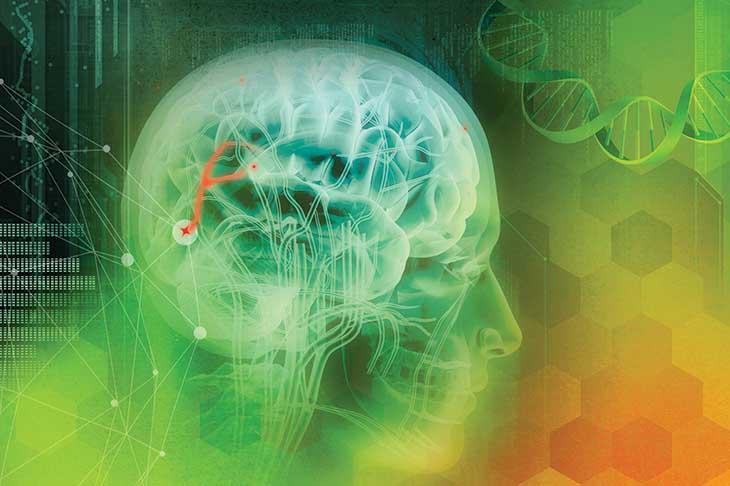Brain signals (Part 2): Decoding stress
Jeff Tasker, professor of cell and molecular biology, holds the Catherine and Hunter Pierson Chair in Neuroscience at Tulane. For more than 20 years, Tasker has studied neuroendocrine systems in the brain and the pituitary gland, which secretes hormones. Grants from the federal National Institutes of Health and National Science Foundation have funded his work.
Tasker concentrates on neuronssignaling cells that generate electrical impulses and transmit information to initiate behavior and control thoughtin the hypothalamus.
Stress is stress… "whether I'm about to be eaten by a lion or I've got a deadline…"
Jeff Tasker, professor of cell and molecular biology
The hypothalamus is an ancient part of the brain. It sits at the top of the brain stem and is essential to physiological homeostasis, the body's functional balanceall the things that happen in the body without our thinking about them.
Right next door to the hypothalamus is the amygdalaa part of the brain that controls anxiety. In the amygdala, “fear-memory” is expressed.
Stressas might be expectedfacilitates the expression of fear-memory.
It can be any kind of stress, says Tasker, “whether I'm about to be eaten by a lion or I've got a deadline, you produce this response that is a neuroendocrine response.”
If the stress is not too severe, the fear-memory, in time, may be suppressed or extinguished.
What happens in anxiety and post-traumatic stress disorders is that the brain does not extinguish fear-memory. Debilitating unease remains.
Lately, at the cellular level in mice models, Tasker is looking at un-extinguishable fear-memory triggered by stress.
“I'm passionate about our research,” says Tasker.
And, he adds, research from the stress and stress disorder perspective is a good niche for Tulane. “We have distinct strengths in this area.”
This article is an excerpt of a feature titled "Brain Signals" that originally appeared in the June 2015 issue of Tulane magazine. Read Part 1 on Alzheimer's research and Part 3 on sex and the brain.

